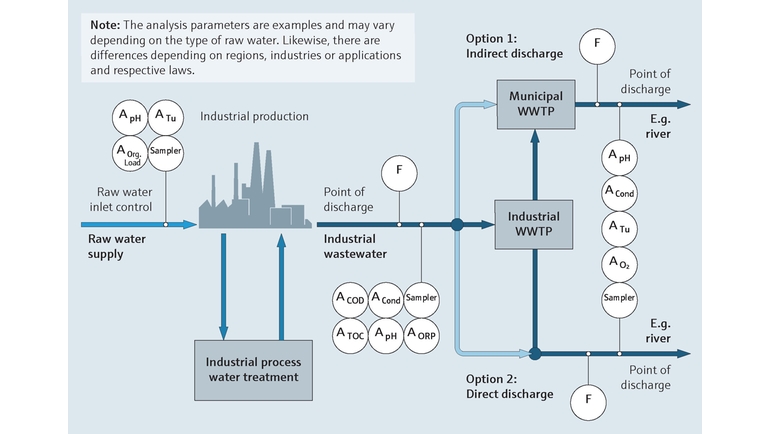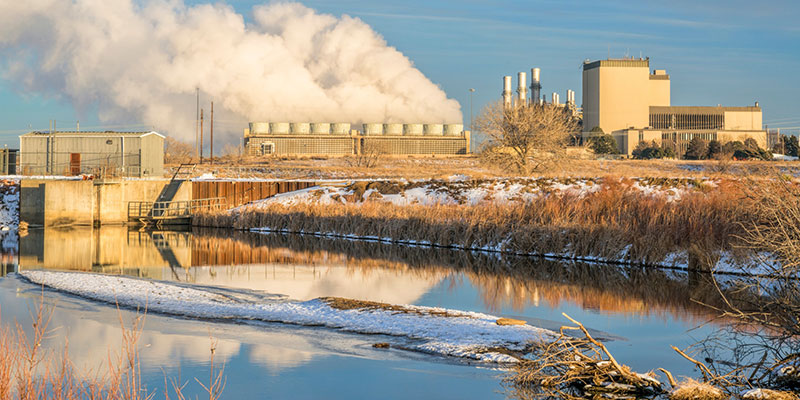Industrial Waste Water Treatment-- Improve Performance with Personalized Water Treatment Equipments
Industrial Waste Water Treatment-- Improve Performance with Personalized Water Treatment Equipments
Blog Article
Innovations and Breakthroughs in Industrial Waste Water Treatment Technologies
The landscape of industrial wastewater therapy is undertaking a transformative change, driven by developments that enhance both performance and sustainability. Emerging technologies, such as membrane layer bioreactors and microbial gas cells, are redefining impurity removal processes while contributing to energy generation. Additionally, source recuperation techniques are obtaining grip, straightening with circular economic climate concepts. As regulatory criteria advance, the integration of AI and artificial intelligence right into wastewater monitoring systems assures to make sure and improve procedures compliance. The complete effects of these developments increase crucial questions concerning their scalability and long-term impact on industry techniques.
Introduction of Waste Water Therapy Technologies
Wastewater therapy modern technologies incorporate a variety of techniques developed to remove impurities from industrial effluents prior to their launch right into the environment. These modern technologies are vital for keeping environmental balance and ensuring conformity with ecological regulations. The key groups of wastewater treatment consist of physical, chemical, and biological methods, each serving distinct objectives based on the nature of the impurities present.

Organic therapy approaches employ microbes to weaken raw material, making them particularly reliable for organic-rich effluents. Methods like turned on sludge and biofilm activators harness the natural deterioration abilities of microorganisms, resulting in considerable decreases in biochemical oxygen demand (FIGURE)
Advanced Purification Strategies
Advanced purification techniques stand for a vital development in the realm of commercial wastewater treatment, boosting the effectiveness of contaminant removal procedures. Industrial Waste Water Treatment. These approaches encompass a variety of technologies, consisting of microfiltration, ultrafiltration, nanofiltration, and turn around osmosis, which offer sequential barriers for different particle sizes and chemical frameworks
Microfiltration and ultrafiltration utilize membrane systems to remove put on hold solids, bacteria, and larger organic particles, boosting the top quality of effluent previous to further therapy. Nanofiltration bridges the void in between ultrafiltration and reverse osmosis, effectively getting rid of natural substances and divalent ions, therefore decreasing the load on downstream procedures.
Reverse osmosis uses the highest degree of filtration by permitting just water and tiny particles to go through its semi-permeable membrane layers, making it ideal for reclaiming high-grade water from commercial effluents. Current advancements in membrane modern technology, consisting of the development of more fouling-resistant and durable materials, have substantially enhanced functional performance and decreased prices.
Including these innovative purification methods not only boosts the general treatment procedure however likewise adds to sustainability efforts by enabling water reuse and resource recovery in industrial settings. (Industrial Waste Water Treatment)
Biological Therapy Developments

In addition, the advancement of engineered organic systems, such as membrane bioreactors (MBRs), combines biological therapy with innovative membrane layer filtration. This integration enables greater effluent high quality and reduced impact, making it suitable for space-constrained commercial centers. Advancements in genetically crafted bacteria have actually additionally emerged, improving the biodegradation of details contaminants, such as drugs and hefty steels, that are generally challenging to remove.
In addition, the implementation of bioaugmentation approaches, where beneficial germs are introduced to improve the existing biological treatment procedures, has revealed encouraging cause boosting Find Out More therapy performance. These developments collectively represent a pattern towards more reliable and lasting organic treatment techniques that can adapt to the developing intricacies of commercial wastewater streams. As industries remain to focus on ecological conformity, these biological developments will certainly play a crucial function in wastewater administration.

Resource Recuperation Approaches
In commercial setups, the assimilation of source recuperation approaches has actually come to be progressively crucial for boosting sustainability and lessening waste. These approaches concentrate on drawing out important materials and power from wastewater streams, therefore changing potential toxins right into multiple-use resources.
One noticeable technique is nutrition recovery, where nitrogen and phosphorus, often existing in excess in wastewater, are recorded and converted right into plant foods. This not only lowers ecological impacts but also provides a circular economic situation solution for agricultural applications. In addition, modern technologies such as anaerobic digestion permit the conversion of organic waste right into biogas, a sustainable energy source that can offset nonrenewable fuel source use in industrial procedures.
In addition, progressed filtering and membrane modern technologies help with the recuperation of industrial spin-offs such as steels and salts. These recovered materials can be rehabilitated right into manufacturing procedures, minimizing the demand for virgin sources.
Future Trends in Drainage Monitoring
As industries progressively focus on sustainability, the future of wastewater monitoring is established to undergo considerable changes. Technological innovations, such as synthetic intelligence and device knowing, will allow a lot more effective monitoring and management of wastewater systems. These innovations can anticipate Going Here upkeep demands, maximize therapy procedures, and improve decision-making, inevitably lowering functional expenses and environmental impact.
Furthermore, the integration of round economic situation principles will play an important role in wastewater monitoring. Industries are anticipated to move in the direction of systems that not just treat wastewater yet additionally recover important sources, such as nutrients, water, and power. This shift will certainly minimize waste and promote the reuse of products, aligning with global sustainability objectives.
Emerging treatment strategies, such as membrane bioreactors and advanced oxidation procedures, will additionally enhance the efficiency of wastewater treatment, permitting higher high quality effluents suitable for reuse. Furthermore, regulatory frameworks are likely to progress, stressing stricter criteria for wastewater discharge and motivating industries to take on ingenious treatment options.
Conclusion
In final thought, the evolution of industrial wastewater treatment modern technologies demonstrates a substantial change towards boosted efficiency and sustainability. Advancements in innovative filtration strategies, organic treatments, and resource recovery methods highlight the industry's commitment to environmental stewardship. The combination of expert system and artificial intelligence even more optimizes these processes, guaranteeing regulatory compliance and promoting a circular economy. Proceeded advancements in these locations will play a vital role in shaping the future of wastewater administration and securing essential water resources.
The landscape of commercial wastewater therapy is undertaking a transformative shift, driven by innovations that improve both effectiveness and sustainability.Wastewater treatment modern technologies include an array of methods developed to remove impurities from commercial effluents prior to their release right into the atmosphere.Taking advantage of the power of biological procedures has led to significant developments in the therapy of commercial wastewater.Furthermore, the implementation of bioaugmentation methods, where useful microorganisms are introduced to boost the existing biological therapy processes, has actually shown appealing outcomes in improving treatment performance. These innovations collectively indicate a trend go to this site towards more sustainable and reliable biological therapy methodologies that can adjust to the evolving complexities of commercial wastewater streams.
Report this page